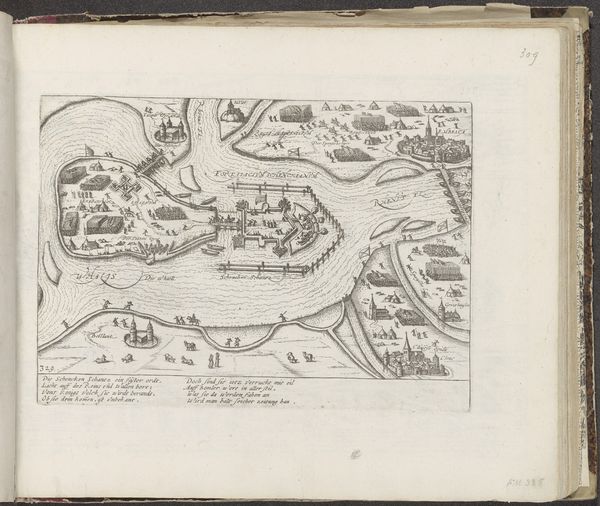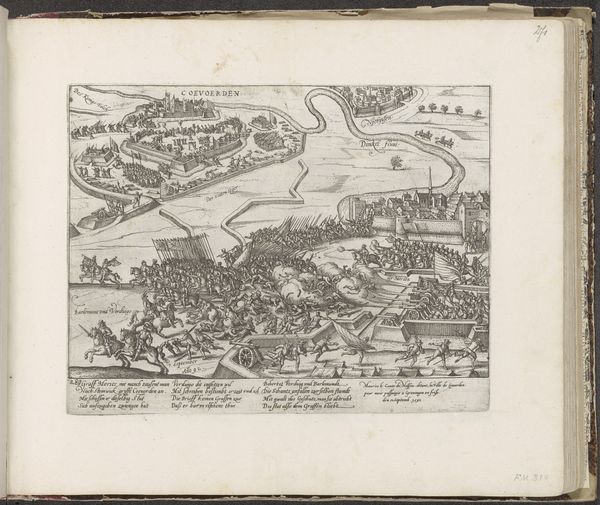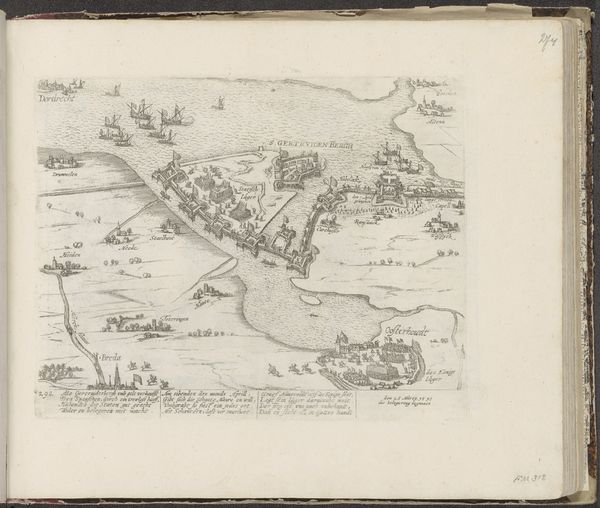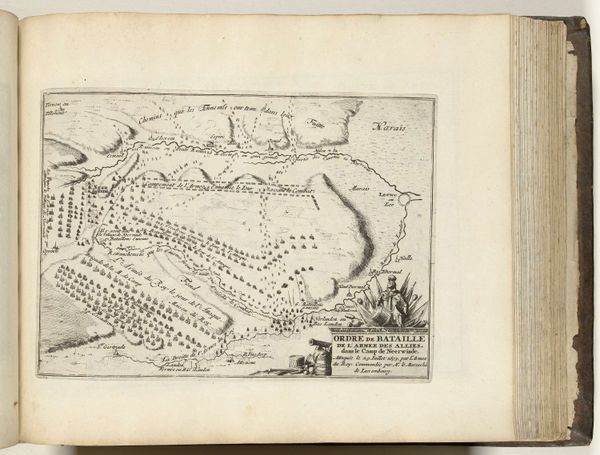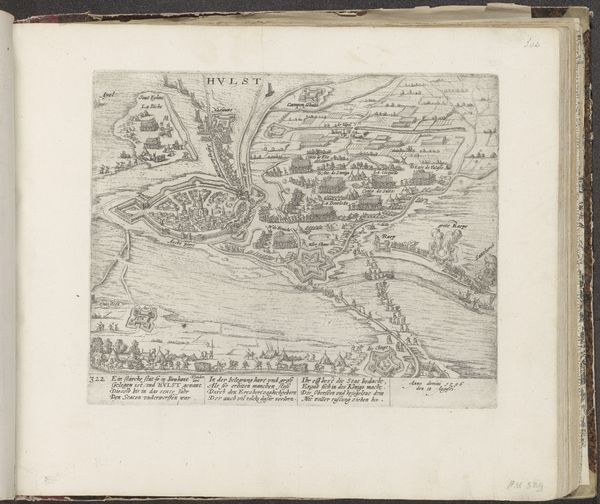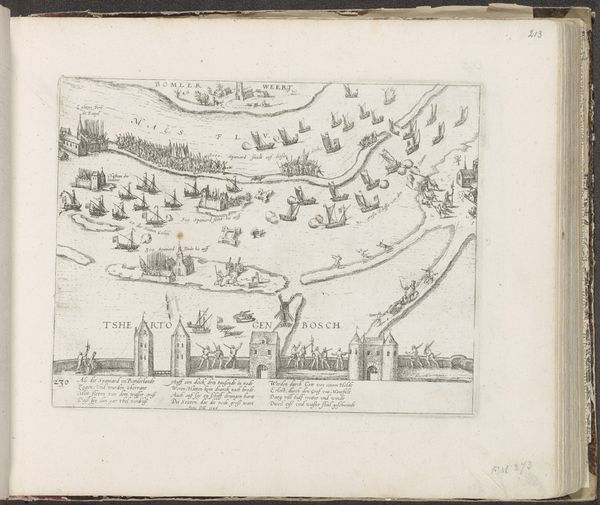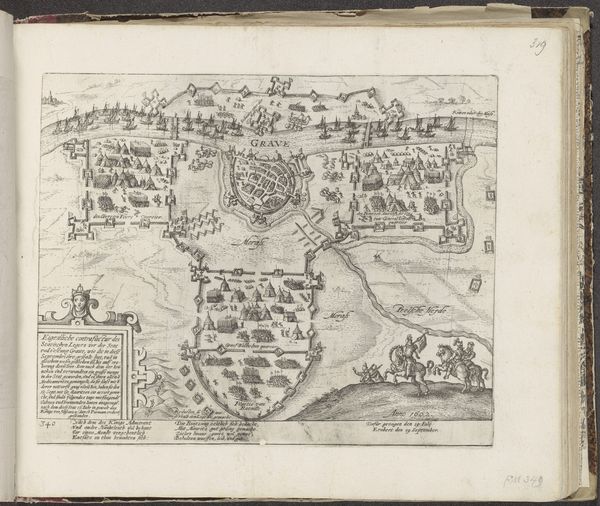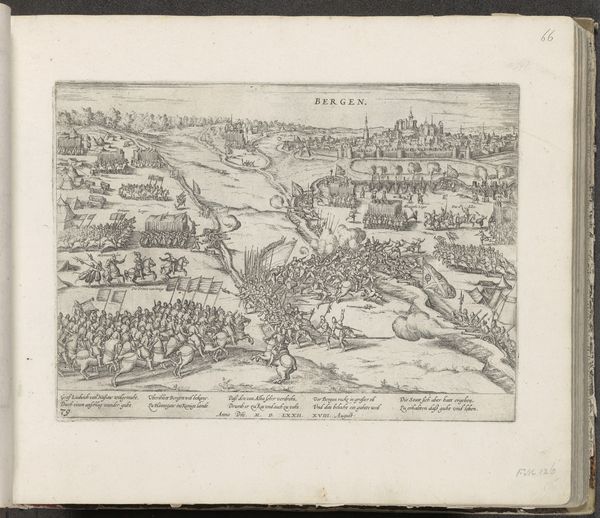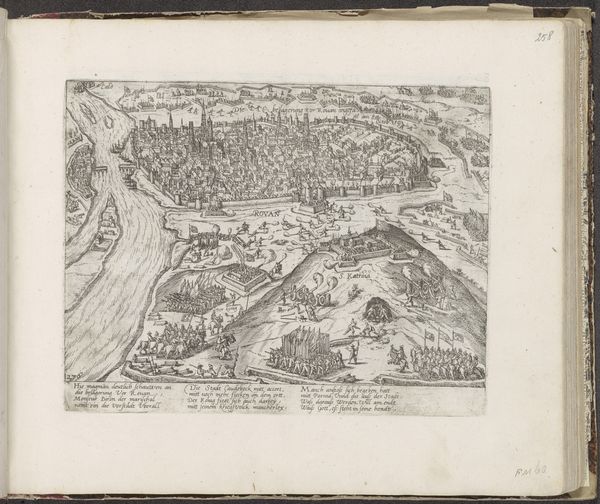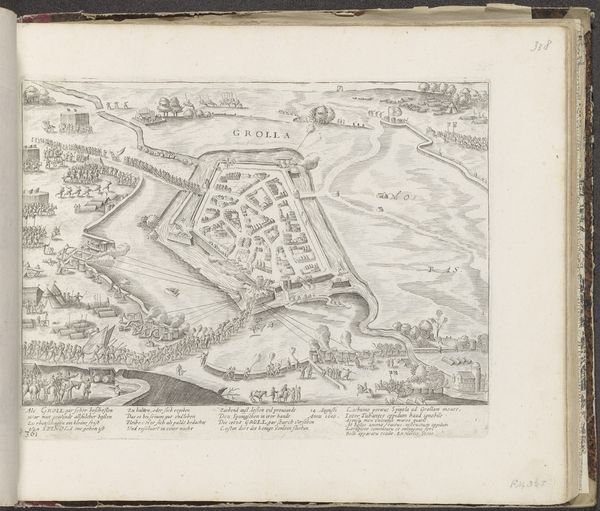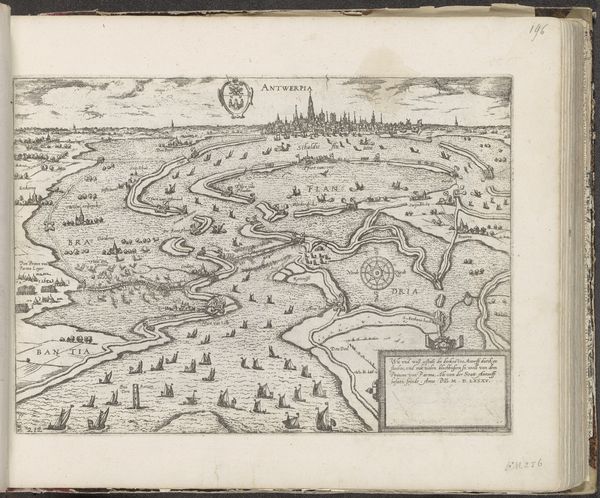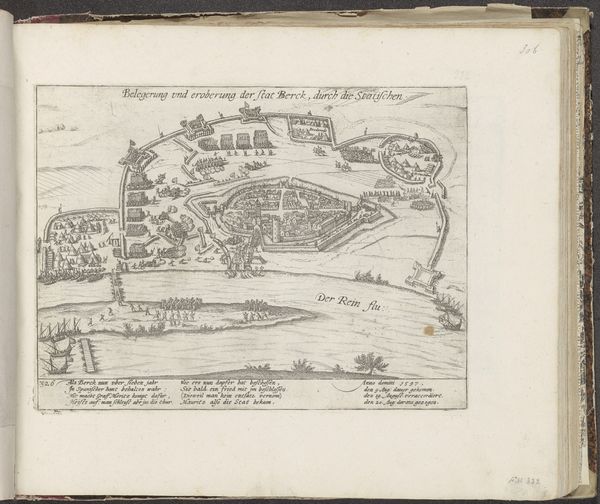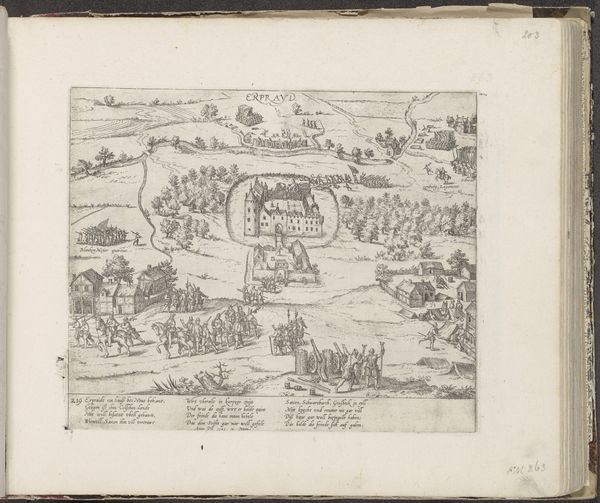
print, engraving
# print
#
landscape
#
11_renaissance
#
history-painting
#
northern-renaissance
#
engraving
Dimensions: height 193 mm, width 259 mm
Copyright: Rijks Museum: Open Domain
Curator: Frans Hogenberg created this engraving, “Nederlaag van het Staatse leger bij Wesel, 1595,” sometime between 1595 and 1597. It's currently held at the Rijksmuseum. Editor: It's stark, a map-like rendering of what seems to be chaos. There’s an impressive amount of detail rendered in these fine lines. I find the mood rather unsettling, like looking at a diagram of someone's defeat. Curator: That sense of unease is interesting, considering its historical context. This print depicts the defeat of the Dutch States Army near Wesel. We need to consider that these images were commodities designed for consumption. The engraving as a medium allows for relatively quick production and wide distribution to inform and, perhaps, misinform the public. Editor: You can see it functioning in multiple ways, visually. The stark, contrasting lines emphasize form and provide an overall sense of clarity that, perhaps intentionally, rationalizes what I'm sure was a messy, sprawling conflict. Note how the river carves its way through the scene, neatly dividing the areas of engagement. It creates an implied structure, directing our gaze. Curator: Exactly, and consider the labor involved. Hogenberg would have been part of a workshop system, potentially collaborating with other engravers, publishers, and distributors to create and disseminate this imagery. Understanding the divisions of labor provides an important contrast to individualistic ideas around the art-making process. Editor: From a formal perspective, there's an interesting tension here between the aerial viewpoint and the detailed rendering of the individual figures, almost like tiny ants in formation. And it emphasizes the theme, no? That it is a kind of calculated destruction… Curator: True, and how those ants or laborers reflect the structure of production. Prints such as this offer a window into the ways that battles were conceptualized, and disseminated, and ultimately how resources are funneled towards and away from production to reinforce narratives, and what this reveals about cultural and technological achievements. Editor: Indeed. The piece’s structure emphasizes an artificial sense of order onto a violent, uncontrollable historical moment, revealing not the truths of battle but the intentions behind its telling. Curator: Yes, understanding the forces that shaped Hogenberg's work as both a commodity and an ideological project reveals much about society itself at the time. Editor: Well, through your insight I am now sensing less of a rendering of chaos, and instead feeling the full implications of a structured interpretation. Thanks for providing this context!
Comments
No comments
Be the first to comment and join the conversation on the ultimate creative platform.
